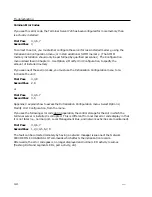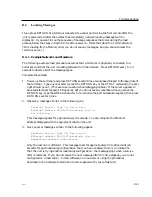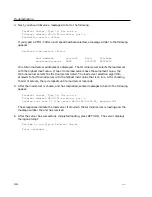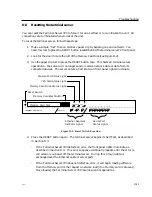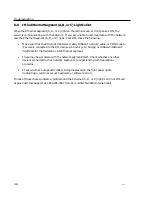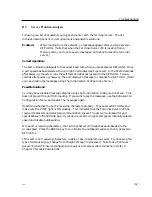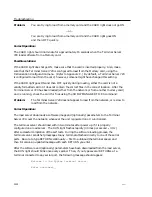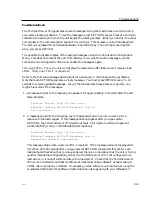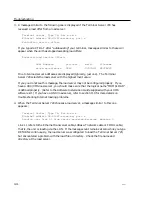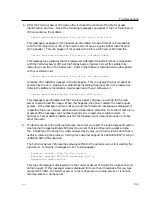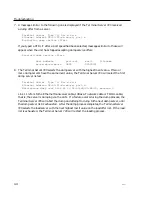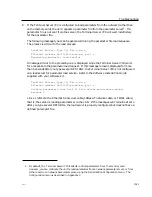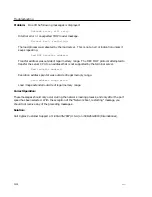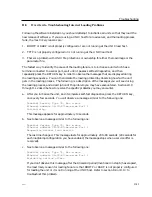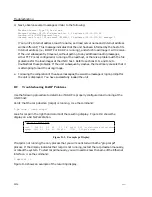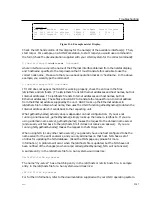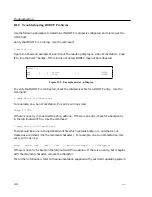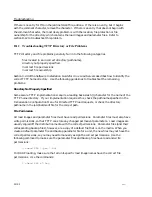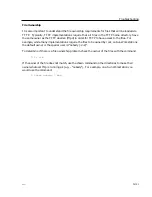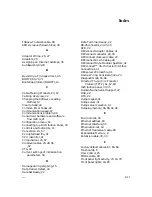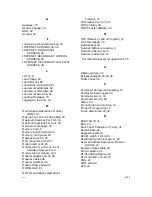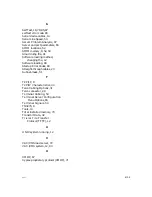
Troubleshooting
d . Next, observe several messages similar to the following:
Terminal Server, Type 76, Rev x.xx.x
Ethernet address 08-00-87-xx-xx-xx Port 1, IP address 192.12.119.26
Loading file /XYPLEX/xpcsrv20.sys
Loading over Link L1 from server UNIXHOST, IP address 192.12.119.20, message 0
(Your unit's Internet address, load file name, and load server name and Internet address
will be different.) This message indicates that the unit has been informed by the host of its
Internet address (i.e., BOOTP or RARP is running), and which load image it will receive.
If the unit subsequently times out, without getting to any additional loading messages,
either TFTP is not configured or running at the load host, or there is a problem with the file
protections for the load images at the UNIX host. Refer to sections D.11 and D.12 to
troubleshoot these problems. If the unit subsequently crashes, the most likely cause is that it
is attempting to load the wrong image.
e . Following the completion of the above messages, the welcome message or logon prompt for
the unit is displayed. You have successfully loaded the unit.
D.9
Troubleshooting RARP Problems
Use the following procedure to determine if RARP is properly configured and running at the
UNIX host:
Verify that the rarp daemon (rarpd) is running. Use the command:
% ps -aux | grep rarpd
Look for rarpd in the right hand column of the resulting display. Figure D-3 shows the
display on a SUN Workstation.
% ps -aux | grep rarpd
root 258 0.0 0.0 56 0 ? IW Sep 10 0.00 /urs/etc/rarpd le0 unixhost
sysmgr 1620 0.0 2.9 40 200 p3 S 17:05 0:00 grep rarpd
Figure D-3. Example ps Display.
If rarpd is not running, the only process that you will see listed will be the "grep rarpd"
process. If the display indicates that rarpd is not running, restart the rarp daemon manually,
or reboot the system. To start rarpd manually, you will need to know the name of the Ethernet
interface. Use the command:
% netstat -i
Figure D-4 shows an example of the resulting display.
D-96
0021

